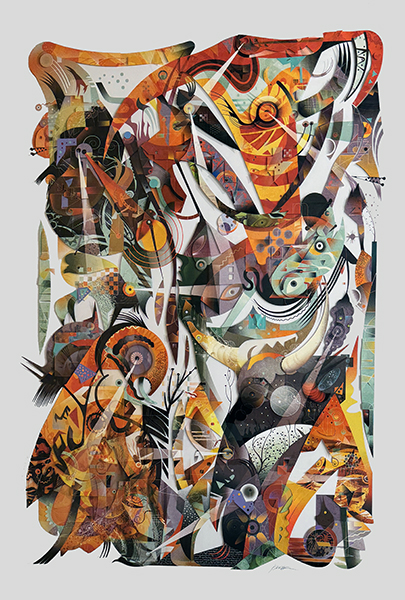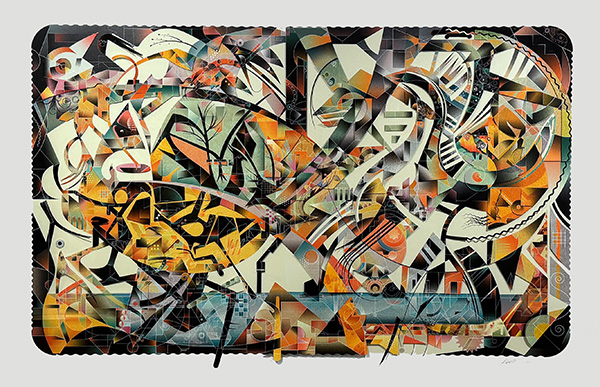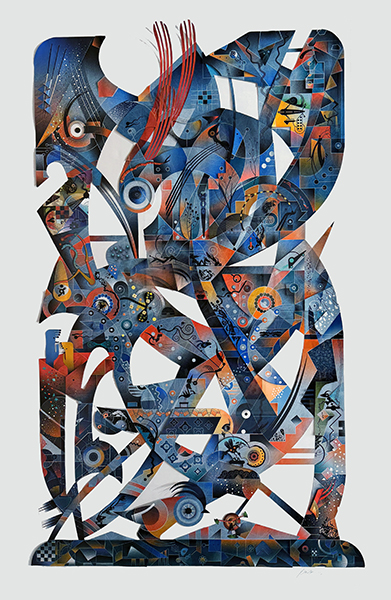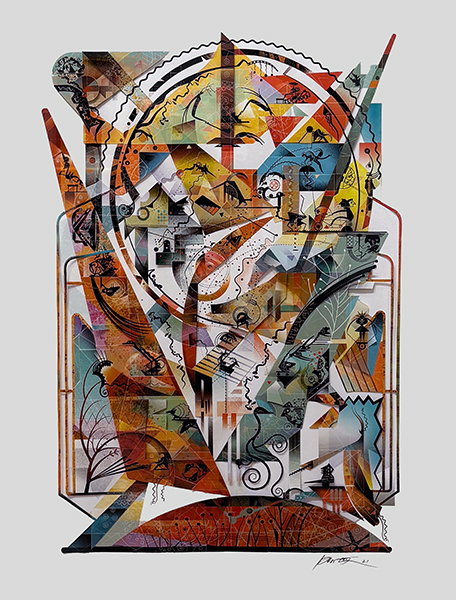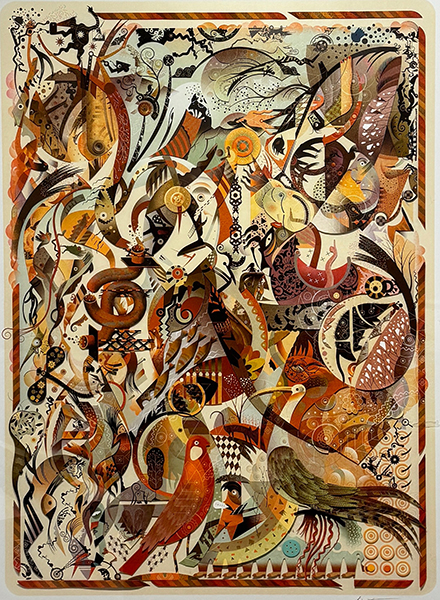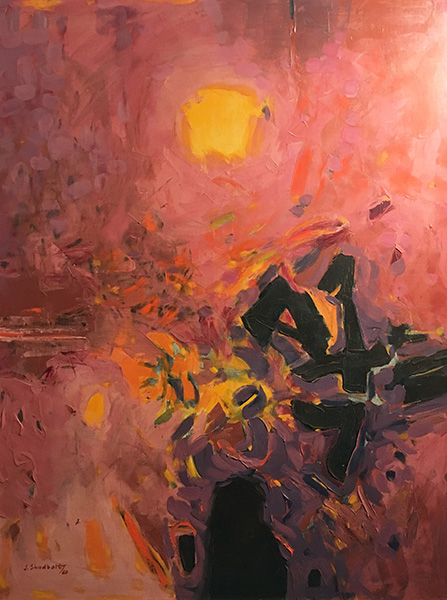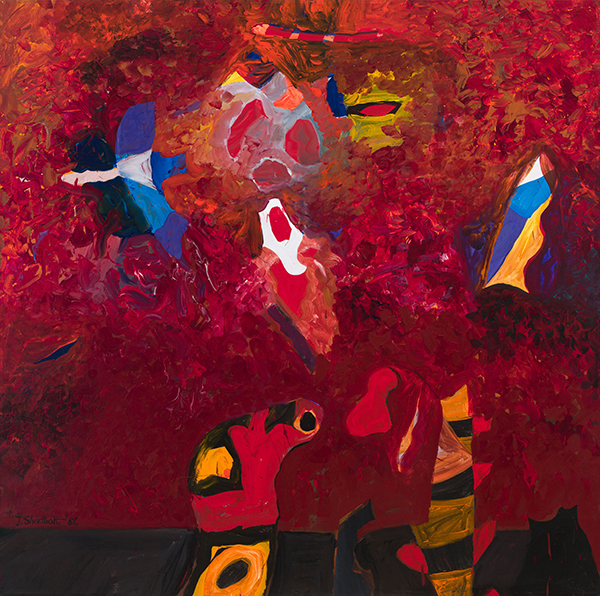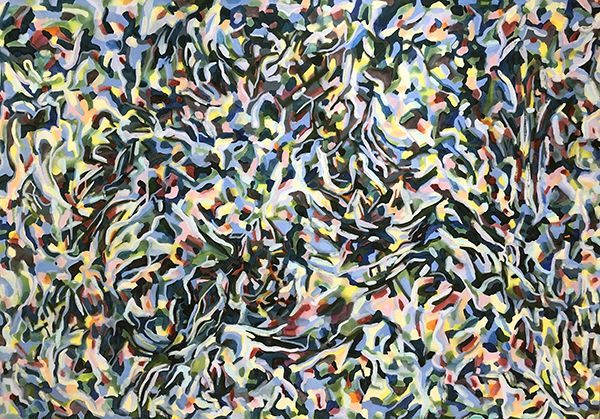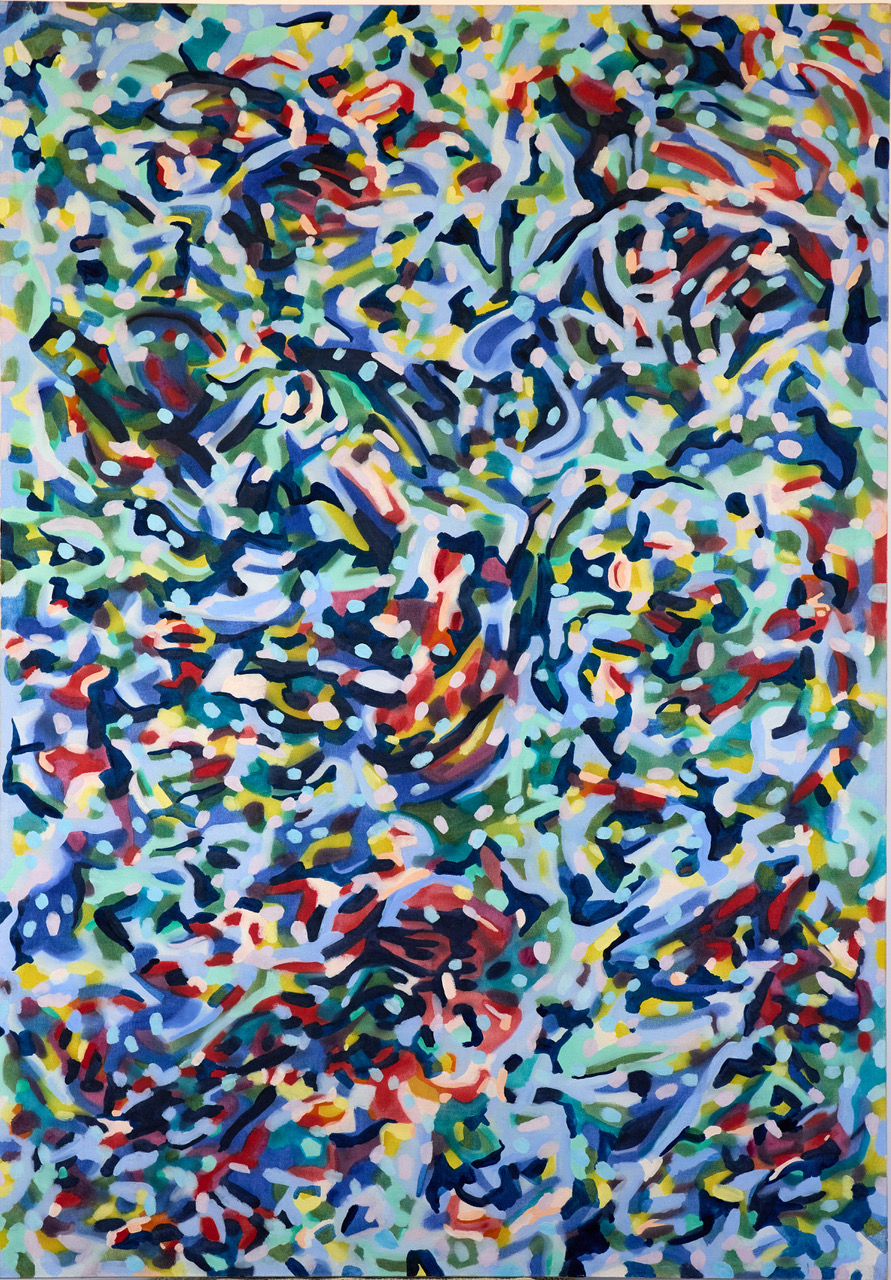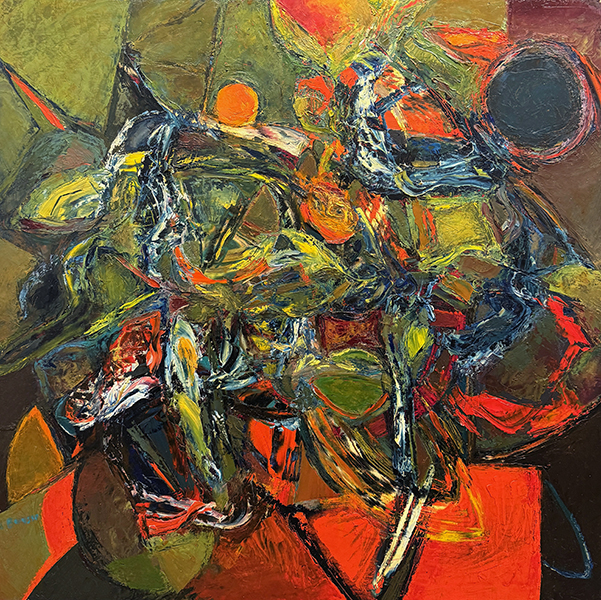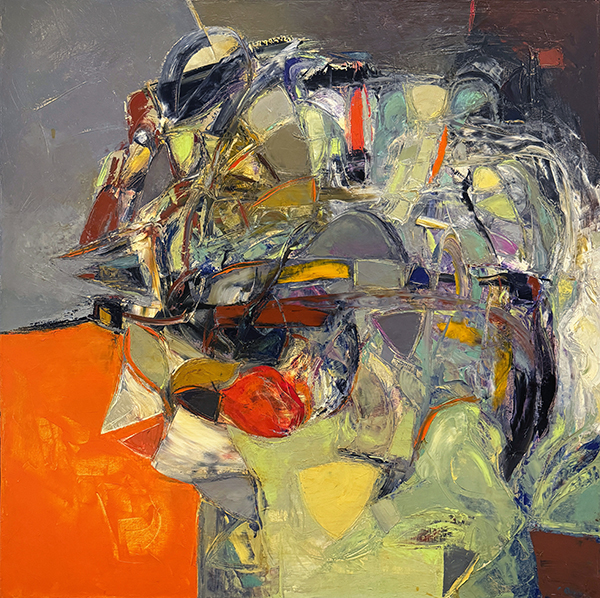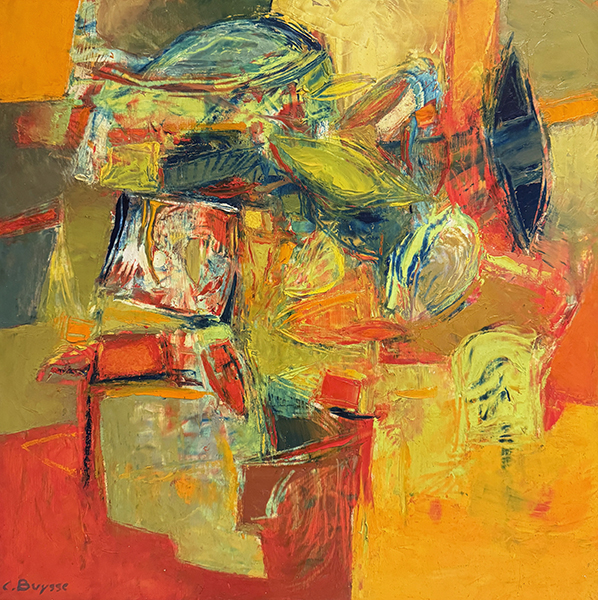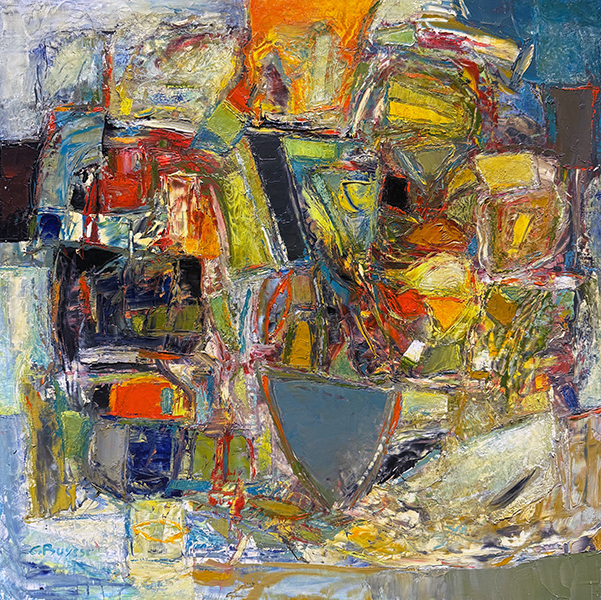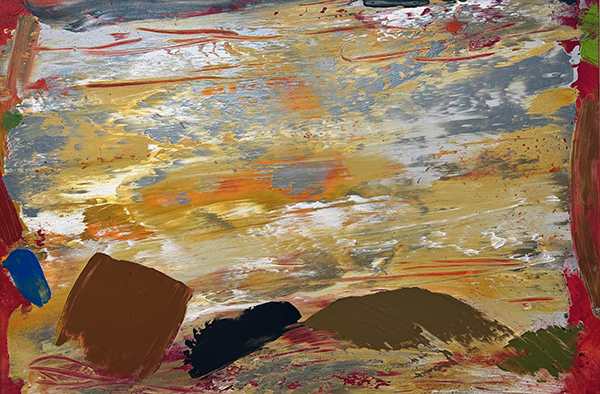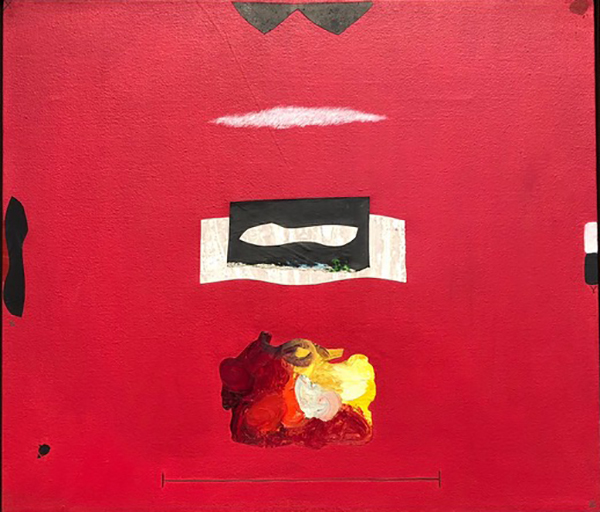Abstract By Nature
March 23 - April 16, 2024Gallery Gevik is pleased to present Abstract by Nature, a group exhibition featuring works by Canadian artists engaging in both traditional and non-traditional methods to produce illustrious works of distinctly timeless quality. The artists included in Abstract by Nature share an interest in creating works that reflect, evoke or transform elements of the natural world into poetic meditations that embrace the chaos of our natural environments. We hope you enjoy the following exhibition preview in advance of the opening on Saturday, March 23, 2024. As always, please feel free to reach out with any inquiries prior to the opening date, either by phone (416-968-0901) or email (info@gevik.com).
Over the course of his long career, multi-media artist Doug Panton has always blended new and unusual materials with traditional media. A professor in the Faculty of Design at Ontario College of Art for over twenty years, he embraces experimentation and risk-taking and in this latest series of works, has honed a unique hybrid digital and analogue based practice, which he describes as exploring new frontiers of expression.
Panton begins each piece with graphite and paper – this important step allows the artist to ground his work, but also to play and experiment. Freedom from design or commitment allows him to leave much of the composition to chance and letting his emotions help guide the way. Panton’s artistic journey does not end in the digital ether but rather culminates in a return to a physical art object that is created using collage techniques, layering digitally inked physical elements by hand to create wonderfully boyant semi-abstracted evocations of the intricate and unstable systems found in nature. “Instead of seeing the inherent unpredictability of nature as a hindrance,” says the artist, “I draw inspiration from it. I believe in relinquishing control and recognizing the chaos of the natural world––it is crucial to infuse the work with inspiration and the possibility of an unexpected outcome.”
The works in this exhibition encompass two different series – the first are the pop art inspired quilt paintings. As a child, Garneau was fascinated by quilts his mother made from the family’s old clothes. Each blanket held intimate memory fragments of a generation: traces of their personal lived experiences and the tastes of that decade’s popular culture. He often lay in bed making up stories inspired by these collages. The Hat Makes the Man for example, is a collage/quilt of mid-last century Classics Illustrated comic books that the artist read in his youth. The speech bubbles are left blank to encourage viewers to make up their own stories while the playful design alludes to the clash of Settlers and First Nation. This series of paintings suggest that, for better or worse, popular culture forms our early imaginations, sense of history and self.
Garneau’s hyper-realistic still life work features books, rocks, fish, and twine arranged to represent the joys and struggles of being a contemporary Indigenous person, academic and artist. As Garneau explains, Indigenous knowledge keepers often feel conflicted about turning their stories into English text – on some level they fear that books will displace them and that text and English do not fully communicate their cultural knowledge. Most of the rocks in these paintings represent grandfathers (stones) and traditional ways of knowing and being. The books typically stand for ‘book learning’ and colonial learning institutions. Juxtaposed stones and books, then, suggests the tension between wisdom shared orally and through the written word, and the tension Indigenous learners may feel in non-Indigenous institutions. A critical writer, Garneau attempts to infuse the still life genre with concepts which are represented visually and through his playful titles. Ultimately, he explains, his paintings are about stimulating thought and empathetic feeling through beauty and humour.
David Garneau has delivered keynotes in Australia, New Zealand, the United States, and throughout Canada on issues such as reconciliation, public art, museum displays and Indigenous contemporary art. His paintings are held in numerous public and private collections including The Canadian Museum of History; The Mackenzie Art Gallery; Mendel Art Gallery; Dunlop Art Gallery; The Glenbow Museum; NONAM, Zurich; Musée de la civilisation, Québec Cty; Imperial Oil; University of Regina; University of Lethbridge; University of Guelph; University of Alberta, Faculté Saint-Jean, and The Alberta Foundation for the Arts.

